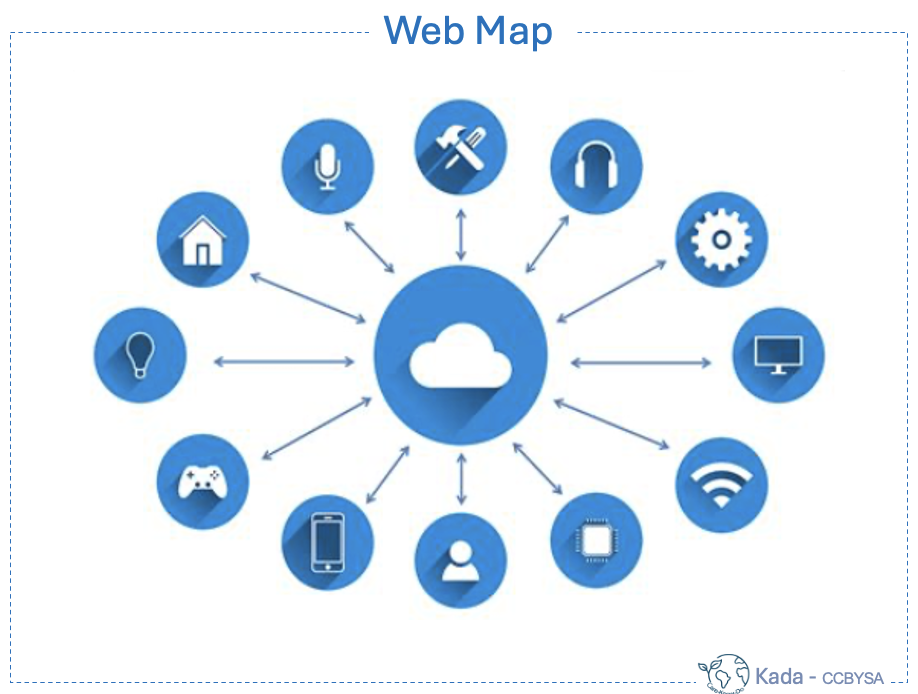Web Mapping is a knowledge cartography technique known was hypermedia representations that emerged in this century. This technique was influenced by the work of Dodge and Kitchin and Zeiliger in 2000s to represent digital networks and documents. Webmaps connects digital references, such as texts, photos, audio, videos among others to support learners in visualizing and navigating the interconnected nature of digital information. It is useful for exploring and organizing the vast array of data available on the internet.

How can we create a Web Map?
- Choose a central topic or domain for your web map.
- Identify key information sources related to the topic.
- Create nodes for each source, such as text documents, images, or videos.
- Connect nodes with lines to represent relationships and hyperlinks.
- Annotate connections with brief descriptions or labels.
- Review the map to ensure a comprehensive representation of the network.
Web Maps can help students to trace and synthesize online information pathways.
The application of Web Maps is valuable in research, digital literacy, and knowledge management.
Our studies about Web Mapping using AI map application indicate an increase in information retrieval efficiency and improved data comprehension as one of the main advantages.